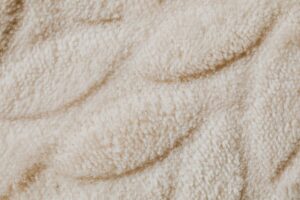I’ve spent years maintaining my backyard pool and know the hassle of dealing with grimy, calcium-stained tiles. While draining your pool might seem like the obvious solution, I’ll share my tried-and-true methods for cleaning pool tiles while keeping the water in. From simple weekly scrubbing to tackling those stubborn mineral deposits, you’ll discover how to restore your pool’s sparkle without the drain-and-refill headache.
Understanding Common Pool Tile Problems

Before you can effectively clean your pool tiles, it’s important to understand the common problems that make them dirty in the first place.
I’ve found that calcium buildup, which appears as white or grayish scaling, is often the primary cause of tile discoloration. You’ll typically notice this along your waterline, where water evaporation concentrates minerals.
Another major concern I deal with is algae growth prevention, especially in areas with high sun exposure and fluctuating chemical levels.
I regularly check for early signs of green, black, or yellow spots forming on tiles. When I spot these issues, I also look for related problems like imbalanced pH levels, which can contribute to both calcium scaling and algae formation.
Understanding these patterns helps me tackle cleaning more effectively and prevent future buildup.
Essential Tools and Materials for Underwater Cleaning
When it comes to cleaning pool tiles underwater, you’ll need several specialized tools and materials to get the job done right.
I always make sure to gather my supplies before getting started, as having everything within reach makes the process much smoother and safer.
Here are the essential items I recommend for underwater tile cleaning:
- A selection of underwater brushes with different stiffness levels for tackling various types of buildup
- EPA-approved tile cleaning solutions that are safe for both the pool water and swimmers
- Protective gear including goggles, gloves, and a face mask to prevent chemical exposure
I’ve found that using the right combination of brushes and cleaning solutions is vital for effectively removing calcium deposits, algae, and other stubborn stains without damaging the tile surface.
Using Pumice Stone for Calcium Deposits
A pumice stone serves as one of the most effective tools for removing stubborn calcium deposits from pool tiles without causing damage to the surface.
I’ve found that the key pumice stone benefits include its natural abrasiveness and ability to work underwater while being gentle enough for regular use.
When I tackle calcium removal techniques, I’ll begin by wetting the pumice stone and gently rubbing it in small circular motions against the calcium buildup.
I always make sure I’m applying consistent, moderate pressure – you don’t want to scratch the tile. If you encounter resistance, I recommend taking breaks and rewetting the stone frequently.
Remember to wear water-resistant gloves to protect your hands, and work on small sections at a time until you’ve restored your tile’s original shine.
Chemical Solutions and Treatments

While pumice stones offer a physical cleaning solution, chemical treatments provide another powerful way to combat pool tile buildup.
I always recommend testing any chemical treatment in a small area first to verify it won’t damage your tile or grout.
Here are my top chemical cleaning methods that I’ve found effective:
- Acidic solutions designed specifically for pool tiles – I use these carefully with proper safety gear to dissolve mineral deposits and hard water stains.
- Enzymatic cleaners that break down organic materials like oils and scum without harsh chemicals, which I prefer for regular maintenance.
- Commercial pool tile cleaners containing phosphoric acid, which I apply with a soft brush for stubborn calcium buildup.
Remember to maintain proper pool chemistry afterward, as I’ve learned this helps prevent future buildup from occurring.
Preventive Maintenance Tips for Pool Tiles
Since preventing tile problems is far easier than dealing with buildup later, I’ve developed several maintenance habits that keep my pool tiles sparkling year-round.
I recommend brushing your waterline tiles weekly with a soft-bristled brush to prevent mineral deposits and scale from forming. For added surface protection, I apply a quality tile sealing product every six months, which creates an invisible barrier against stains and calcium buildup.
After swimming, I’ll often wipe down the tiles above the waterline with a microfiber cloth to remove any oils or sunscreen residue.
Don’t forget to maintain proper water chemistry and check your pH levels twice weekly, as imbalanced water is the leading cause of tile deterioration and staining.
I also suggest running your pool filter daily to keep debris from settling on tile surfaces.
Professional Cleaning Methods and Equipment
Even with regular maintenance, there’ll be times when you need professional-grade cleaning methods and specialized equipment to restore your pool tiles to their original beauty.
When I’m dealing with tough calcium deposits or stubborn algae stains, I recommend considering these professional tile cleaning approaches that I’ve found most effective:
- Bead blasting systems that use special media like crushed glass or sodium bicarbonate to safely remove buildup without damaging tiles
- High-pressure water systems with specialized nozzles that can reach depths up to 5 feet below the waterline
- Advanced chemical cleaning solutions that professionals use with proper safety equipment and ventilation
I always suggest hiring certified pool maintenance experts who’ve the right professional equipment and training to handle these intensive cleaning methods safely and effectively.
Best Practices for Waterline Tile Care

Because waterline tiles experience constant exposure to chemicals, sun, and mineral deposits, they require special attention to maintain their appearance and prevent long-term damage.
I recommend implementing these tile cleaning techniques on a weekly basis to prevent buildup and staining.
I’ve found that effective scrubbing methods work best when you start with the gentlest approach first. I suggest using a soft nylon brush with a mild cleaning solution, working in small sections from left to right.
For stubborn stains, I’ll apply a specialized tile cleaner and let it sit for 2-3 minutes before scrubbing.
If you notice scaling or calcium deposits, I always use a pumice stone with light pressure to avoid scratching the tile surface.
Seasonal Tile Maintenance Schedule
While pool tile maintenance is important year-round, I’ve developed a seasonal schedule that helps me track and complete essential cleaning tasks throughout the changing weather conditions.
I’ve found that regular seasonal inspections and proper cleaning frequency keep my pool looking pristine and prevent costly repairs down the road.
Here’s my recommended schedule that you can follow:
- Spring: Conduct a thorough inspection after winter, remove any calcium buildup, and deep clean the waterline tiles to prepare for heavy summer use.
- Summer: Perform weekly light cleaning of waterline tiles and check for algae growth, adjusting your cleaning frequency based on pool usage.
- Fall: Clean tiles thoroughly before covering the pool, paying special attention to corners and steps where debris tends to accumulate.







